Halwa is a delicious Assyrian treat made with roux and Date Molasses. This Halwa recipe is totally different from how Halva is usually prepared and in my humble opinion, way better! It's rich, sweet, and perfect with a cup of chai!
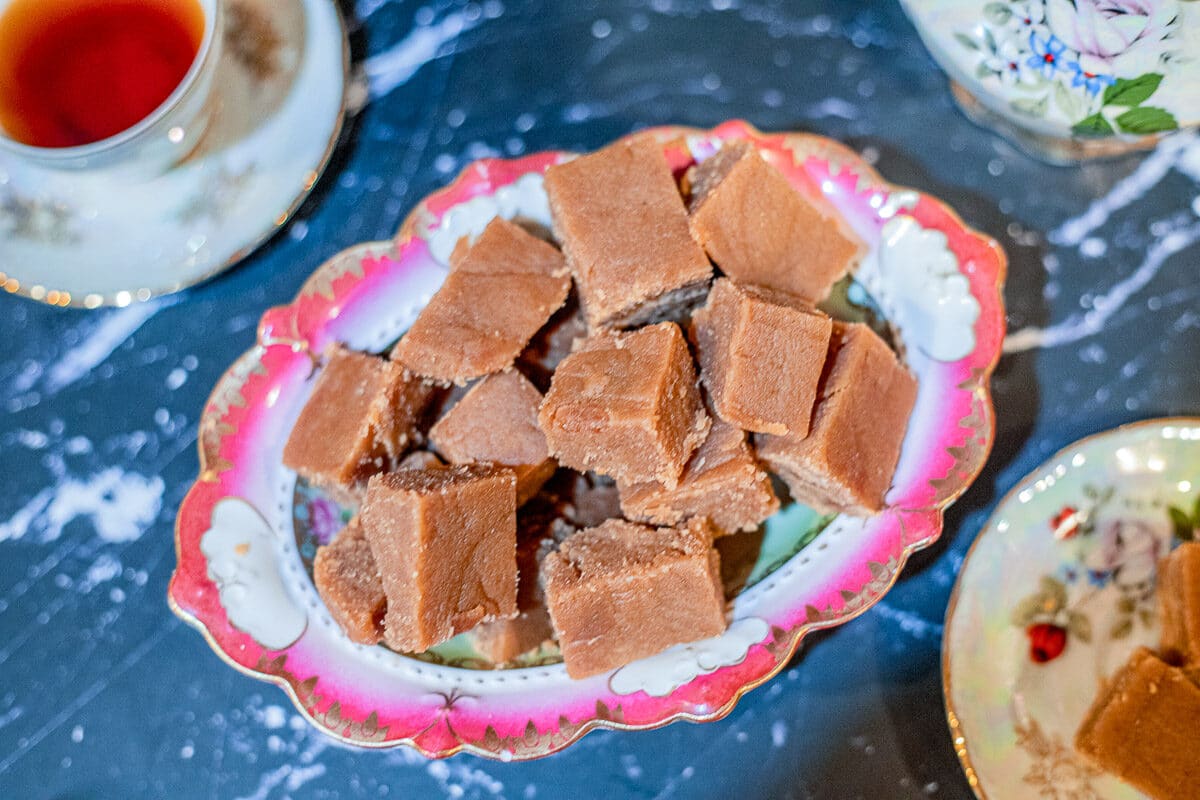
There are many different types of halva. Some have a texture similar to nougat and are made with Tahini Paste. While others are dry and brittle.
Some are dotted with nuts such as pistachios. Still, others are nut-free. There is even carrot halwa and semolina halwa. Assyrian Halwa has a smooth and creamy texture, somewhat similar to fudge, and does not usually contain any nuts.
Halwa is almost always served with hot tea or as we call it "chai." There is an Assyrian custom that when guests come to your home to pay their respects after a death in the family they are almost always served halwa with their tea.
This halwa recipe is also served at Assyrian churches. After church services, there is usually a time of fellowshipping where tea is served with sweets like halwa, kleiche, and Kadeh.
It is particularly served during times of fasting. This includes the 40-day fast leading up to Easter and the 25-day fast leading to Christmas.
Many Assyrians abstain from eating meat and dairy during these fasts. So instead of making halwa with butter, it is prepared with vegetable oil. There are some halwa recipes that use a combination of butter and oil.
Halwa is also served for special occasions, celebrations, and anytime you are entertaining guests.
Mom was known for her delicious halwa recipe. I had the pleasure of watching her prepare it and learned all her little tricks. Now I'm passing those tricks on to you!
Jump to:
😍 Why You'll Love This Recipe
- This halwa recipe is a traditional recipe that all Assyrians should learn how to prepare!
- Even if you're not Assyrian, you can make and enjoy this delicious treat.
- This halwa recipe stores well. It can be refrigerated and enjoyed in moderation...if you can control yourself, haha.
🛒 What You Need For This Recipe

🔖 Ingredients & Substitutions
- Butter: I used unsalted butter for this halwa recipe, but ghee would be another great option.
- Flour: All-purpose flour
- Date Molasses: You can use grape molasses or date molasses. You can purchase either at most Middle Eastern markets or on Amazon.
- Optional: Some optional ingredients that you can experiment with include rose water, cardamom, and nuts to garnish the finished halwa.
🍯 How to Make This Halwa Recipe
Step 1: In a heavy bottom saucepan, melt butter over low heat and bring to a boil. Simmer over low flame for approximately 5 minutes, being careful not to burn the butter.
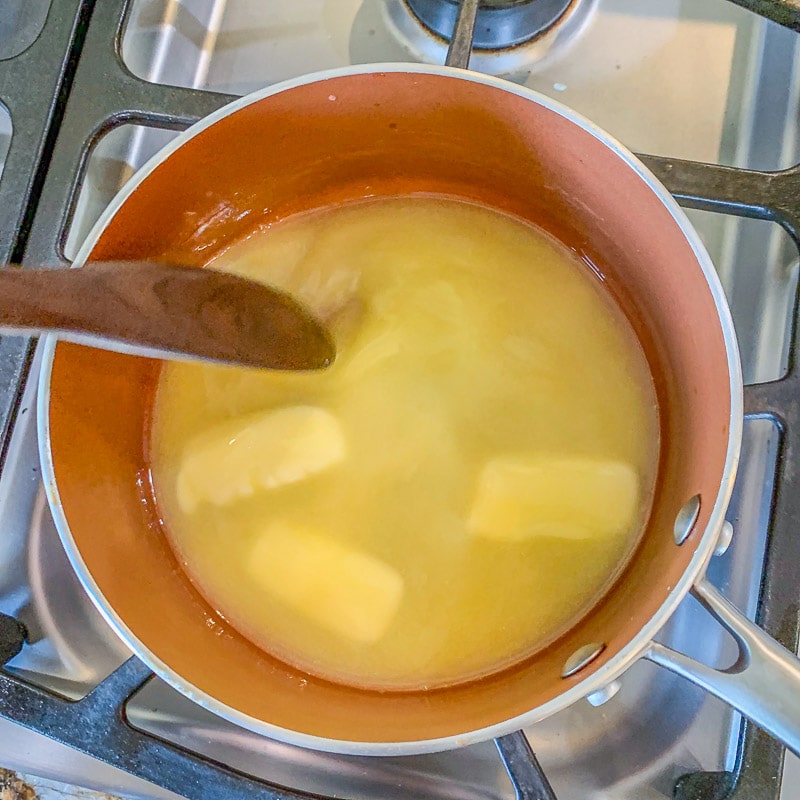
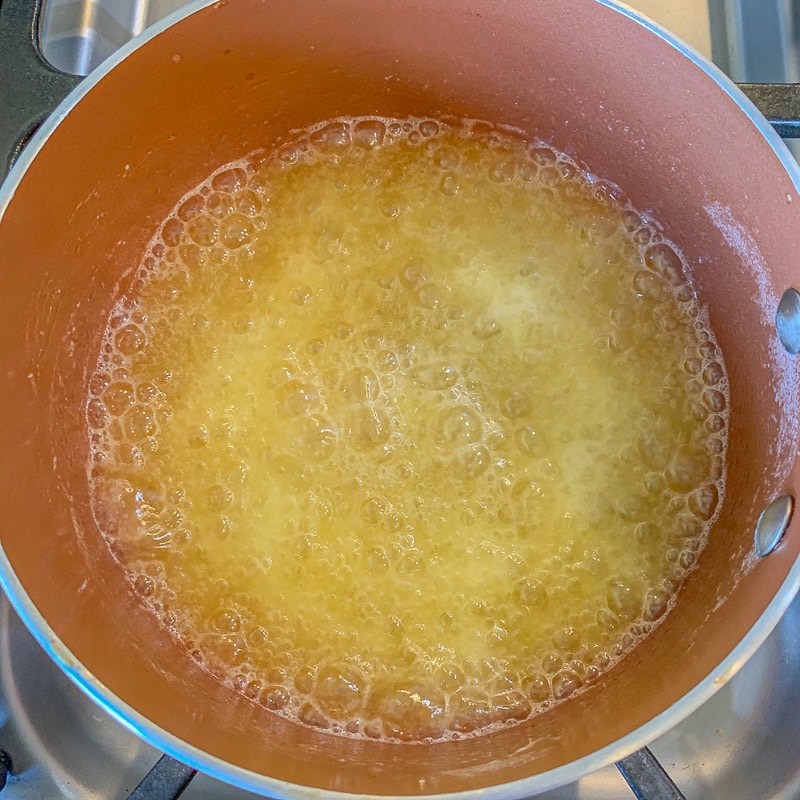

Step 2: Gradually add flour, while stirring over medium heat for 5 additional minutes.
Would you like to save this recipe?

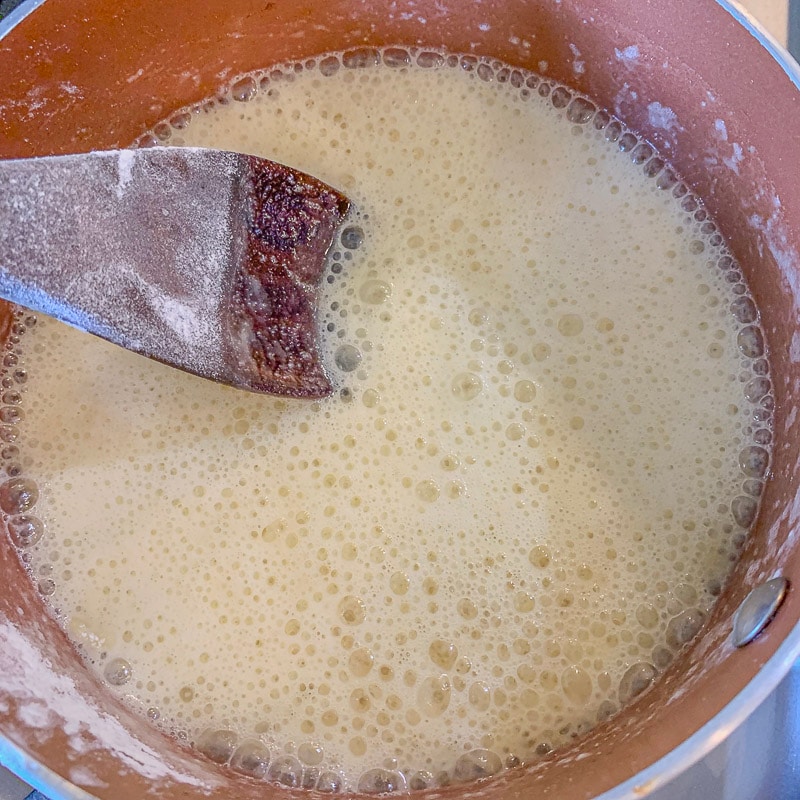
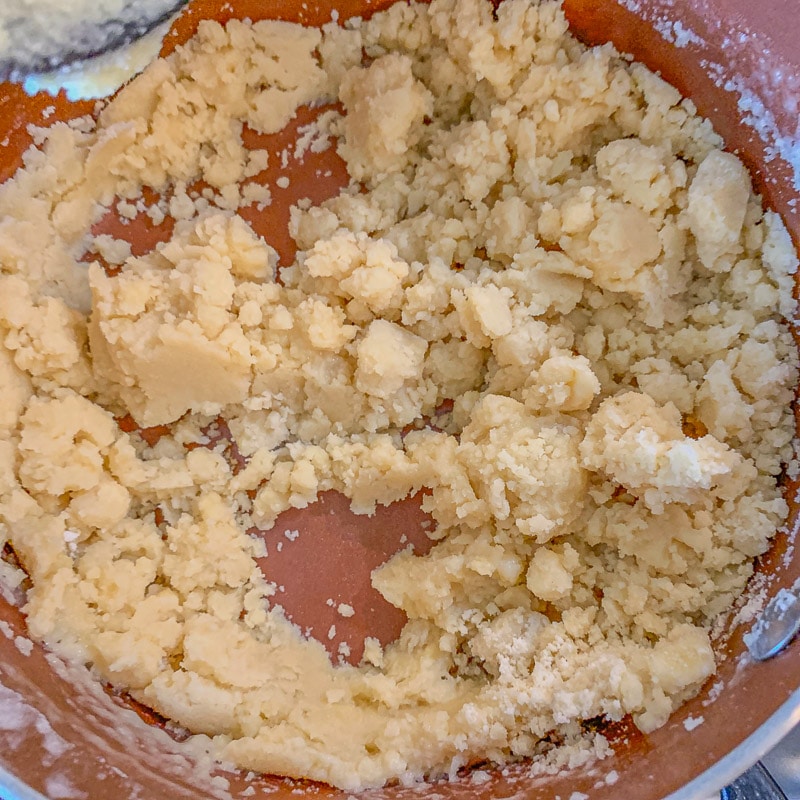
Step 3: Continue to roast and stir the mixture over low heat until the it turns dark tan and has a nutty aroma. This should take approximately 20 minutes.
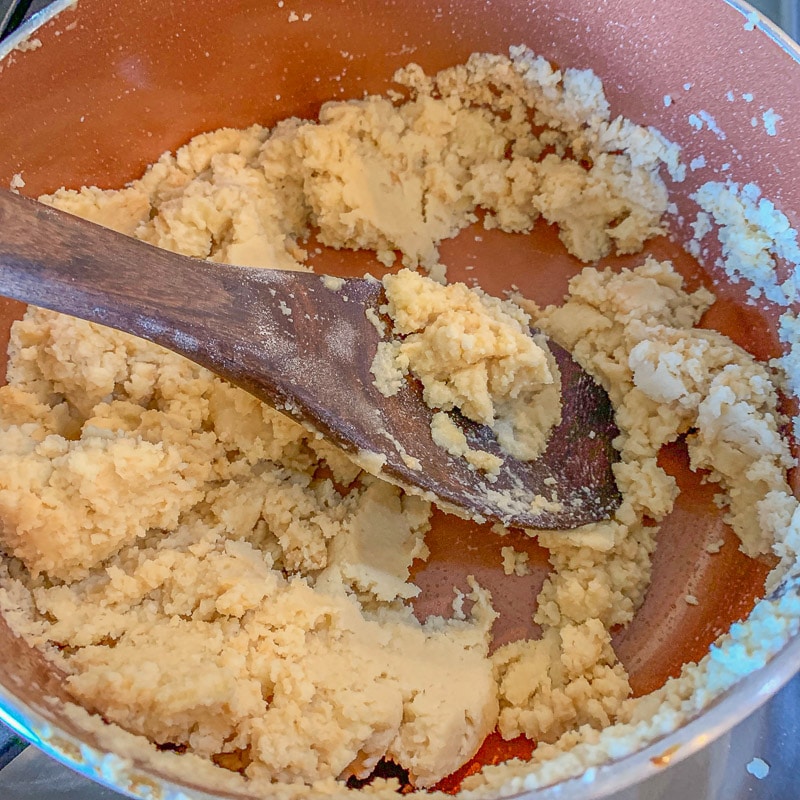
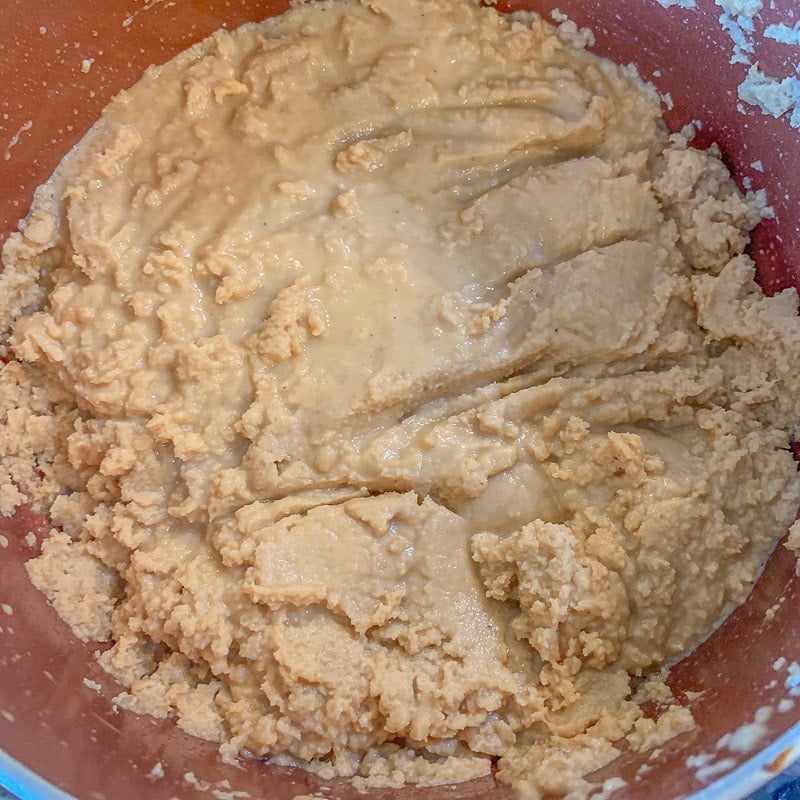
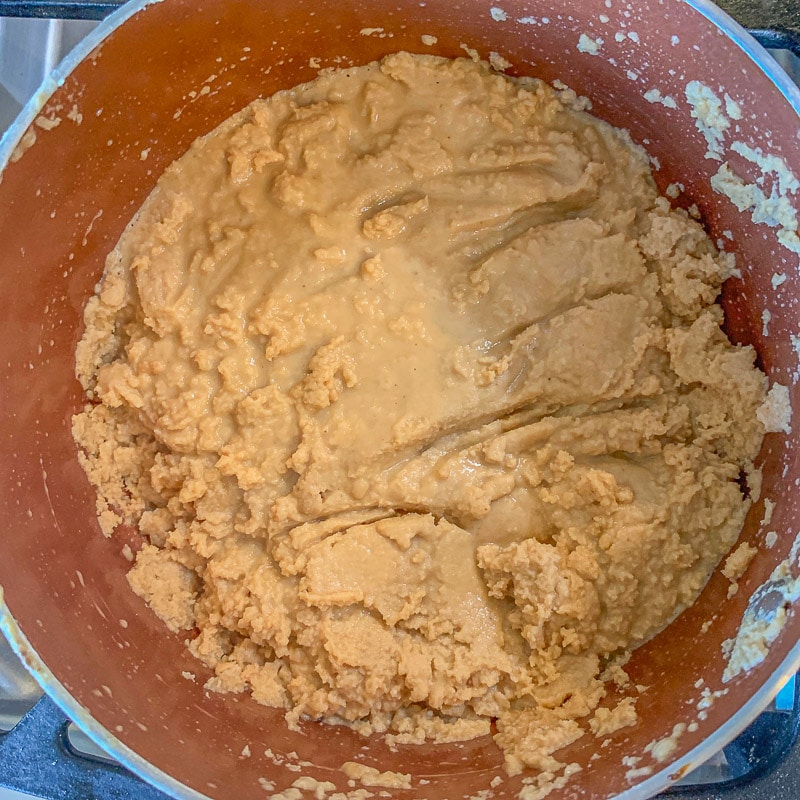
Pro Tip: If you love cardamom like I do, here's where you can add 1-2 teaspoons of cardamom powder, or to taste. This was not in my mom's halwa recipe but I just look for any opportunity to include cardamom in my recipes.
Step 4: Mix date molasses and water in a separate small saucepan and bring to a boil. Carefully pour the molasses into the roux (flour and butter mixture). Mix thoroughly until completely combined. There should be no streaks of light and dark colors. The halwa mixture should be a solid brown color.
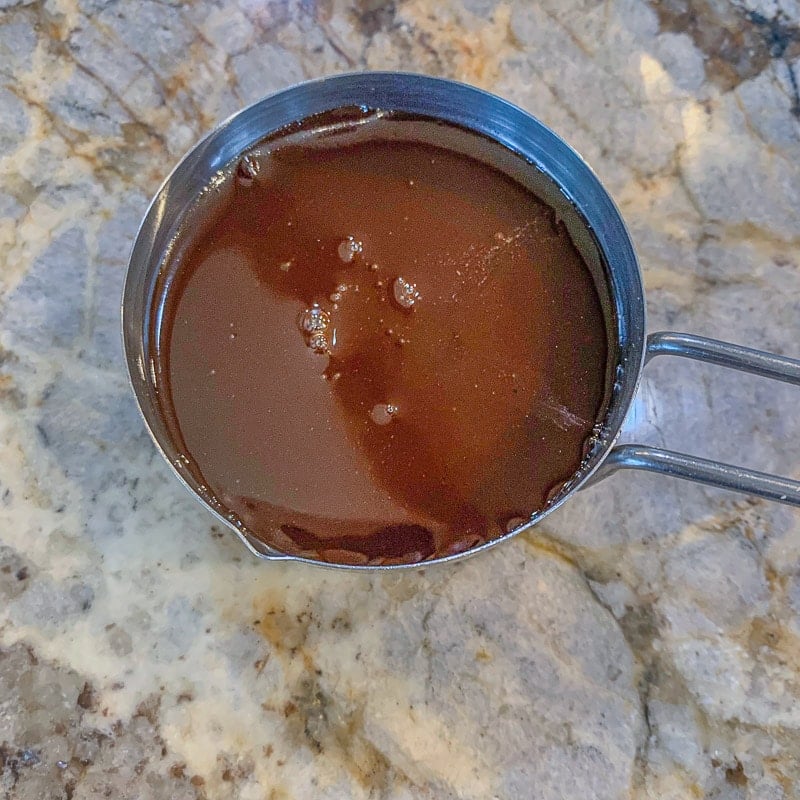
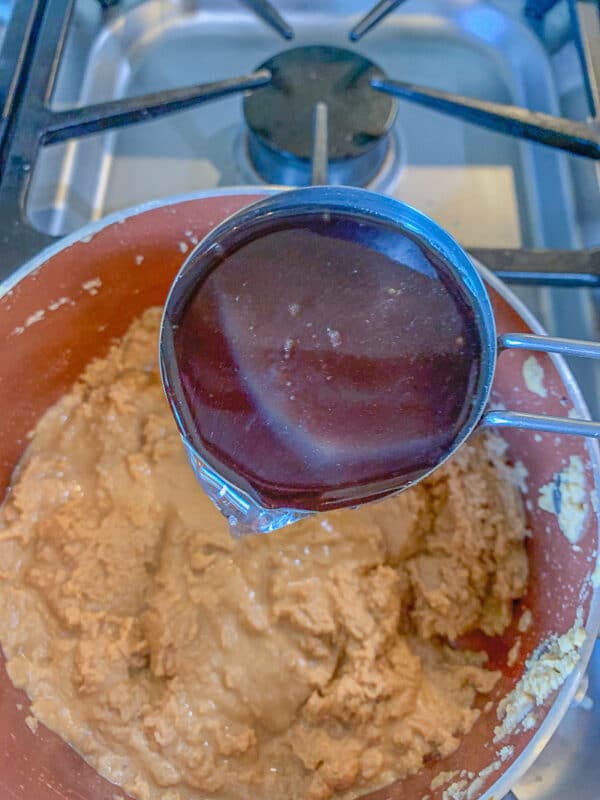
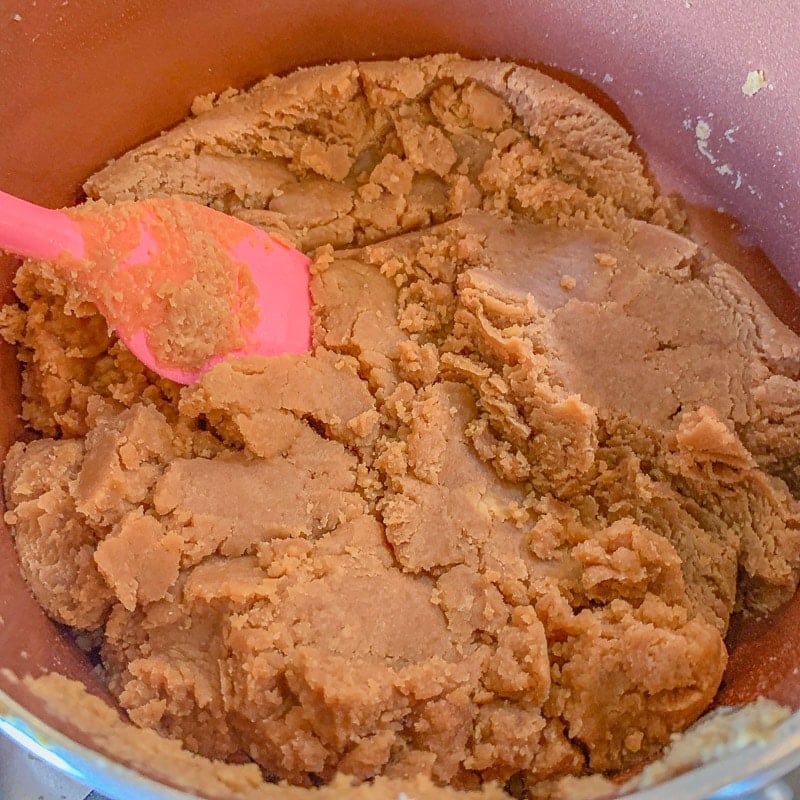
Step 5: Transfer the halwa mixture into a loaf pan or other small dish. Press down firmly to pack the halwa using a spatula or the back of a wooden spoon. Slice into 1"-2" portions using a knife. Cool completely before serving.
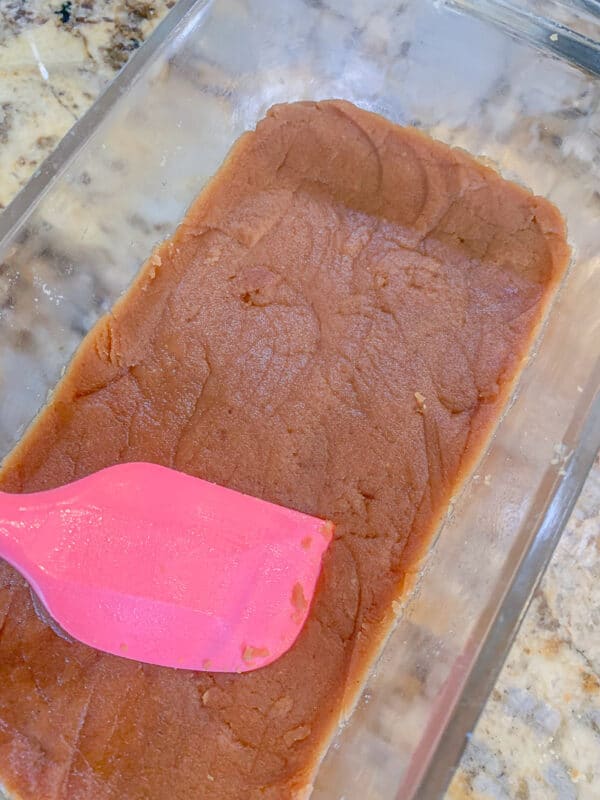

Pro Tip: Here is another optional tip to take your halwa recipe to the next level. Garnish each cube with a toasted walnut halves, cashews, or a toasted almonds.
🤷🏻♀️ Recipe FAQs
Assyrians serve Halwa on the 40th day after a loved one's death. It is also served on the one year anniversary. The sweet Halwa represents that the loved one is with Jesus. The Halwa is served with black Turkish coffee with no sugar which represents the bitterness of the loss.
Halwa originated in the Middle East. It is enjoyed by many cultures including Assyrians, Jews, Turks, and Indians.
👩🏼🍳 Pro Tips
- I halved the original halwa recipe found in my cookbook to make a smaller batch, you can easily double the recipe.
- The halwa should be approximately 1" thick. Use a pan that will allow you to achieve this thickness. If the pan is too large the halwa will not be thick enough.
- If this halwa recipe doesn't come out as thick as you'd like, just reheat it briefly in the same saucepan then pour into a smaller pan or dish.
- Halwa is usually even darker in color. I used homemade Date Molasses that was not as dark as store-bought molasses. If you want the color to be darker, use this Date Molasses.
- Store halwa in an airtight container either at room temperature or in the refrigerator.

🍮 More Middle Eastern Dessert Recipes
If you enjoy this halwa recipe, be sure to try these other Middle Eastern sweets!
📖 Recipe
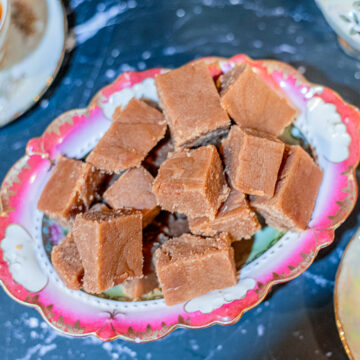
Assyrian Halwa Recipe
Equipment
- 1 loaf pan
Ingredients
- ¾ cup unsalted butter
- 1½ cups all-purpose flour
- ½ cup date molasses
- 3 Tablespoons water
Instructions
- In a heavy bottom saucepan, melt butter over low heat and bring to a boil. Simmer over low flame for approximately 5 minutes, being careful not to burn the butter.
- Gradually add flour, while stirring over medium heat for 5 additional minutes.
- Continue to roast and stir the mixture over low heat until the it turns dark tan and has a nutty aroma. This should take approximately 20 minutes.
- Mix date molasses and water in a separate small saucepan and bring to a boil. Carefully pour the molasses into the roux (flour and butter mixture). Mix thoroughly until completely combined. There should be no streaks of light and dark colors. The halwa mixture should be a solid brown color.
- Transfer the halwa mixture into a loaf pan or other small dish. Press down firmly to pack the halwa using a spatula or the back of a wooden spoon. Slice into 1"-2" portions using a knife. Cool completely before serving.
Notes
- If you love cardamom like I do, here's where you can add 1-2 teaspoons of cardamom powder, or to taste. This was not in my mom's halwa recipe but I just look for any opportunity to include cardamom in my recipes.
- Here is another optional tip to take your halwa recipe to the next level. Garnish each cube with a toasted walnut halves, cashews, or a toasted almonds.
- I halved the original halwa recipe found in my cookbook to make a smaller batch, you can easily double the recipe.
- The halwa should be approximately 1" thick. Use a pan that will allow you to achieve this thickness. If the pan is too large the halwa will not be thick enough.
- If this halwa recipe doesn't come out as thick as you'd like, just reheat it briefly in the same saucepan then pour into a smaller pan or dish.
- Halwa is usually even darker in color. I used homemade Date Molasses that was not as dark as store-bought molasses. If you want the color to be darker, use this Date Molasses.
- Store halwa in an airtight container either at room temperature or in the refrigerator.


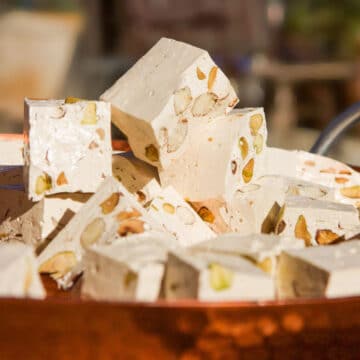

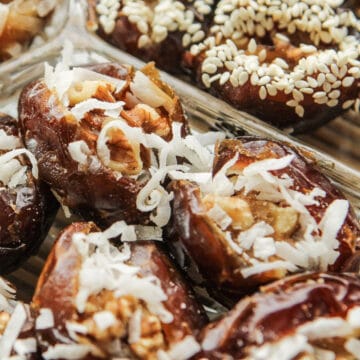
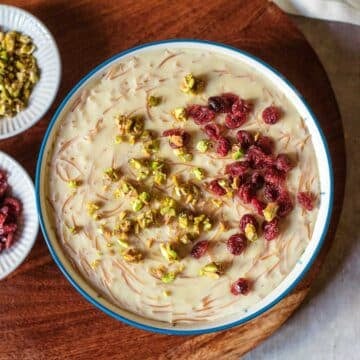
Tom Z says
It came out very delicious and moist!! Not dry or hard!! Thank you!!
Hilda Sterner says
Thank you, Tom, I appreciate your review!
Tom Z says
So easy to make and so delicious!! We told the kids it’s Assyrian brownies!!
Hilda Sterner says
Haha, I love it Tom, you're not too far from the truth!
Romena says
Hello, I made the recipe and it was too dry!!
Hilda Sterner says
Hi Romena, Sorry that you didn't like the recipe. I've never had anyone mention having this problem before so not sure what happened. However, you can easily fix that issue by adding more water/syrup.Either way, good luck!
Violet says
Hi Hilda thank you for the halva Recipe it turned out delicious 😋I have a question! can leave it out for a few days at room temperature?
Regards,
Violet
Hilda Sterner says
Hi Violet,
Thank you for the comment and review and I'm glad you're pleased with the results. To answer your question, yes, you can leave it out a few days at room temperature. Take care!
Traci says
Yummy… I have tried many recipes for Halwa and always failed until now. I just ate three pieces…lol I hope to leave some for the family.
Being half Assyrian I didn’t get enough of this growing up but with an occasional visit to my Assyrian family I was able to discover my great love for this treat. I’m finally able to make it myself. I subbed out one Tbl. of water for rose water but I may even up that a bit more next time around. Thank you so much for your recipes. I can’t wait to try more of them. .
Hilda Sterner says
Hi Traci,
My mom was known for her Halwa, so I'm glad you liked her recipe. I don't make it very often because I'm scared I'll eat it all! No self-control whatsoever, haha. Enjoy and thank you so much for the review!
Tania says
Very delicious and tasty!! Yummy in my tummy!! 😍😍
HildaSterner says
Haha, thank you Tania! I appreciate you taking the time to review the recipe. 🙂
Romina Malek says
Hi Hilda;
I have been looking for Kadeh and Halva Recipe for years. No one would give me the correct recipe until I found you. thank you so much. I have tried both and they turned out perfect. one question for you? for Halva, if I want to make a big batch. Can I cook the Roux in the oven?
thanks.
HildaSterner says
Hi Romina, thanks for the comment. I'm glad you liked the recipes. Please rate them with stars when you get a chance! I've never heard of cooking roux in the oven before, so I don't think so. Unless you know something I don't? 😬 Mostly because you have to stir it continually so that it cooks evenly and doesn't burn. My mom's original recipe was double the one I shared so you can easily double it and cook it over the stove. I hope that helps and basimta! 😘
Romina says
Hi Hilda,
I made it again and doubled the recipe. It came out very good.
Thank you again.
HildaSterner says
Thanks for letting me know, enjoy!
Kelly Methey says
This sounds delicious! I can’t wait to taste it!
HildaSterner says
I can't wait to see you!